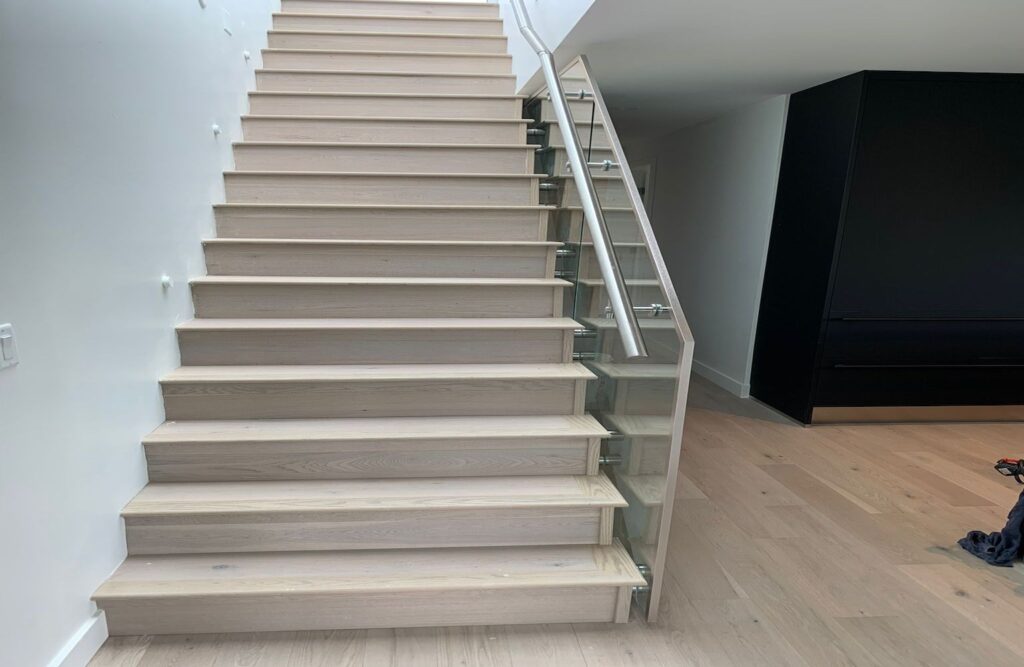7110 Linden Ave
info@gladfloor.ca
7787142422
Opening Times:
Mon - Fri 9am-5pm
 Glad Floor Contracting INC
7787142422
Glad Floor Contracting INC
7787142422
info@gladfloor.ca
Hardwood

Hardwood flooring is a classic and durable flooring option that can add warmth and beauty to any room. Here is a step-by-step guide to installing hardwood flooring:
- Prepare the subfloor: Make sure the subfloor is clean, dry, and level. Remove any carpet, padding, or old flooring, and vacuum up any debris. Check the level of the subfloor with a long straight edge to ensure there are no high or low spots.
- Acclimate the flooring: Bring the hardwood flooring into the room where it will be installed and allow it to acclimate for at least 48 hours. This will allow the flooring to adjust to the temperature and humidity of the room.
- Lay down underlayment: Lay down a moisture barrier over the subfloor to protect the hardwood from any moisture coming from the subfloor. Then lay down a layer of roofing felt over the moisture barrier to create a cushion for the hardwood.
- Begin installation: Starting in the corner of the room, lay down the first row of hardwood planks with the tongue facing out. Use spacers between the planks and the wall to maintain an even expansion gap.
- Continue laying planks: Continue laying the planks in rows, nailing each plank to the subfloor using a pneumatic flooring nailer. Stagger the joints of the planks so that no two joints are next to each other.
- Cut planks: Use a saw to cut the last plank in each row to fit against the wall. Use the leftover piece from the previous row to start the next row, as long as it is at least 8 inches long.
- Install the last row: Measure and cut the last row of planks to fit, leaving an expansion gap against the wall. Use a pry bar to snap the last row into place.
- Install trim: Install baseboard or quarter-round trim around the perimeter of the room to cover the expansion gap.
- Sand and finish: Sand the hardwood floor to remove any imperfections and create a smooth surface. Then, apply a finish to protect and enhance the natural beauty of the hardwood.
- Clean up: Remove any spacers and sweep or vacuum the floor to remove any debris.